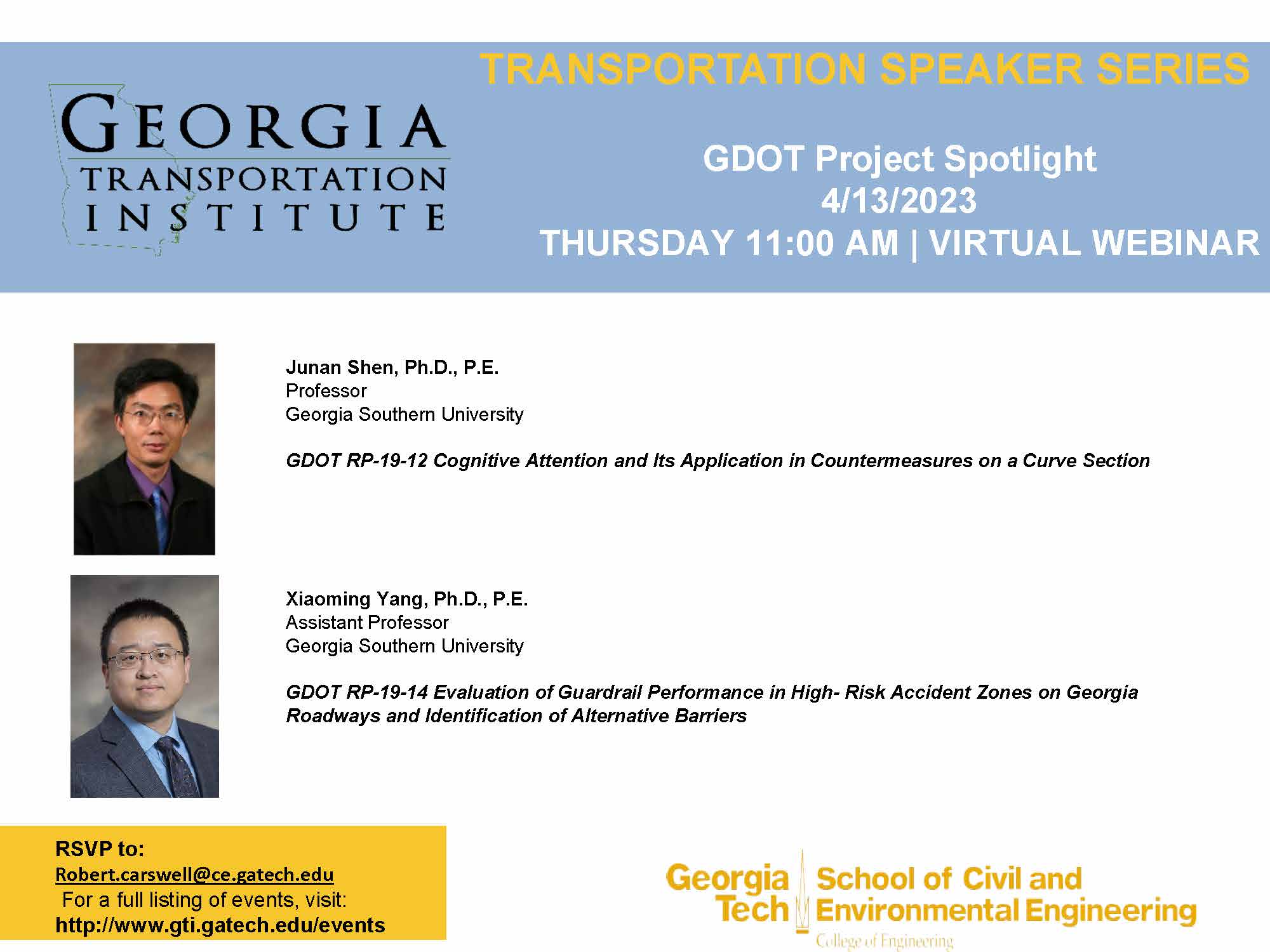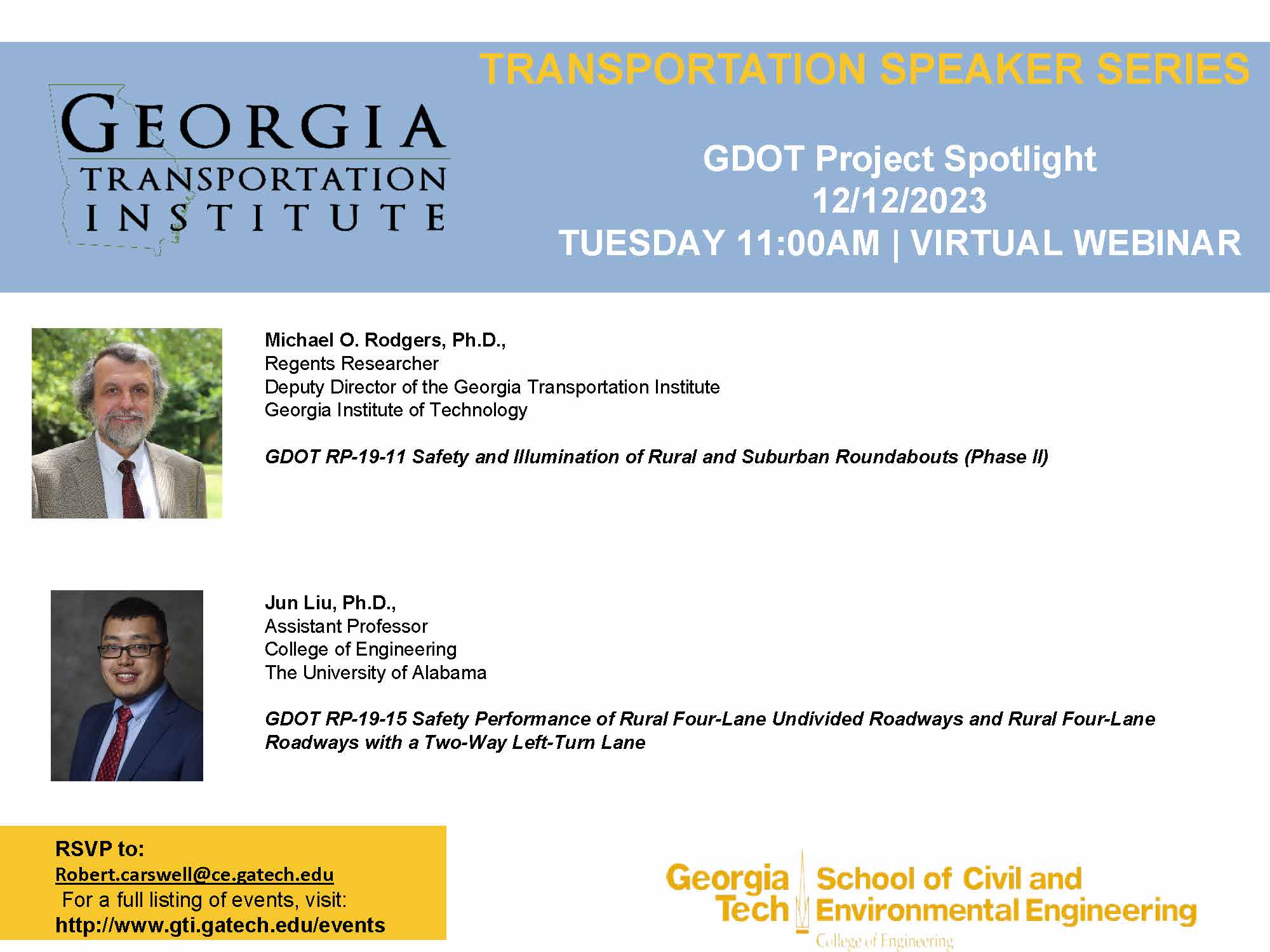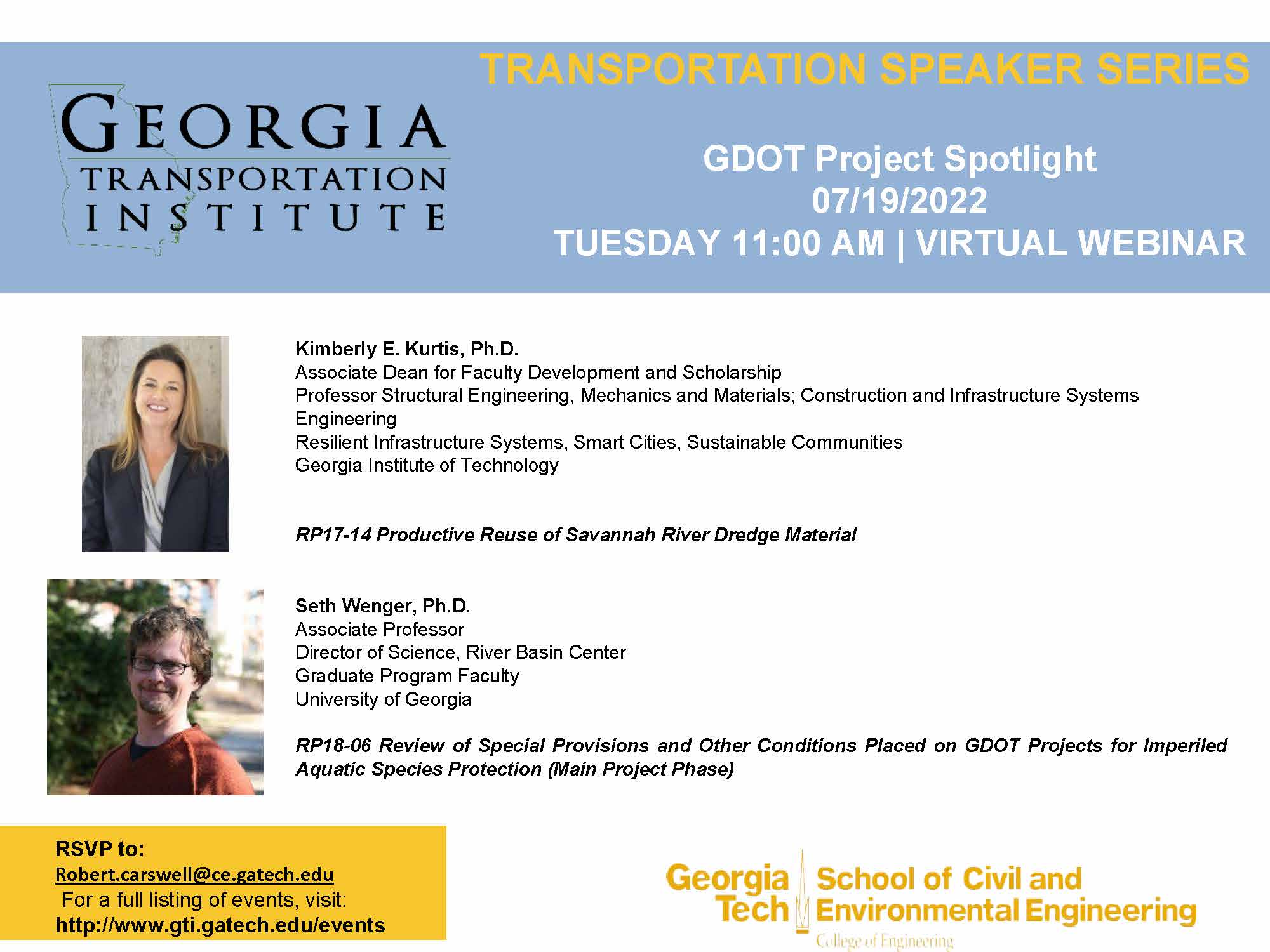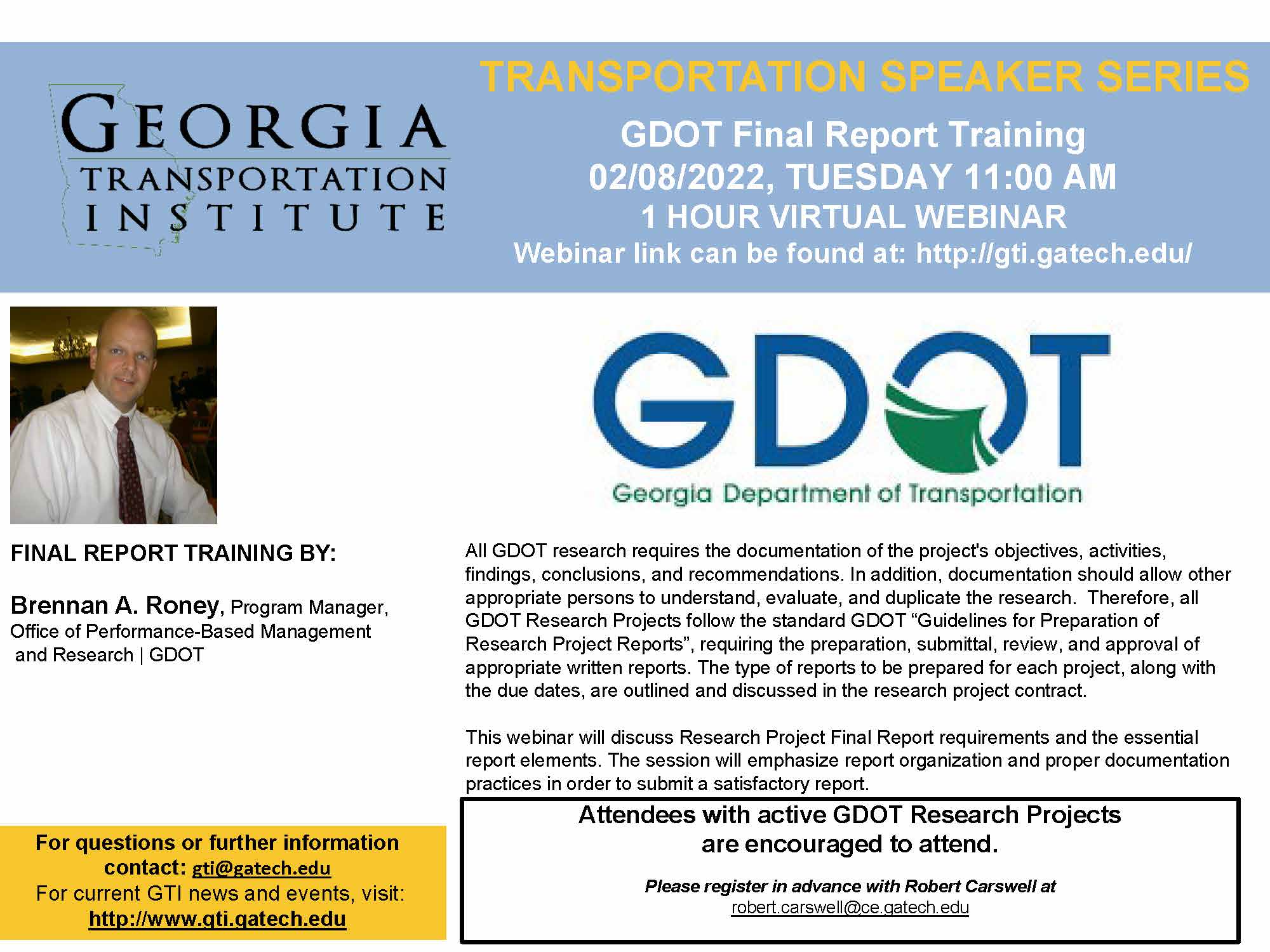Thursday April 13th, 2023 the Georgia Transportation Institute will hosted a 1-hour webinar that spotlighted two recently completed GDOT Research projects. Each project had maximum of a 15-minute presentation, with a short time afterward for questions.
You can join the event by using the Microsoft Teams link below:

Presenter: Junan Shen, Ph.D., P.E., Professor
Georgia Southern University
Junan Shen is a full Professor of Civil Engineering and the Director of Asphalt Research Laboratory at the Department of Civil Engineering and Construction. I teach civil engineering major courses in the field of transportation and materials and supervise post-doctoral fellow and graduate students for researches
Title: GDOT RP-19-12 Cognitive Attention and Its Application in Countermeasures on a Curve Section
Abstract:
To reduce crashes and improve traffic safety on roads, this project explored a methodology of evaluating the safety countermeasures based on cognitive attention and driving performance with eye-tracking and driving simulation technologies and comprehensive analysis of eye movements, driving performance, and short-term memory. An experiment for data collection of cognitive response and driving performance to 11 countermeasures was designed with two weather conditions (clear and foggy) and two traffic flows (light and heavy) in a rural road curve section with a right and a left turn. Four combinations of the weather conditions and traffic flow were formed. Four sequence groups of the combinations were followed to eliminate the bias in data collection. Data of 60 participants were collected. Analysis of variance (ANOVA) tests indicated that countermeasures, weather conditions, and traffic flow impacted the drivers’ cognitive attention, driving behavior, and short-term memory. Dividing participants into groups with different sequences of simulation combinations was useful to improve the bias for a limited sample size, while different starting time points of the combinations did not cause significant differences in the data collected. Finally, regression analyses using machine learning technology indicated that edge line pavement marking, shoulder rumble strips, flexible delineator posts, curve warning sign, and increased shoulder width are effective countermeasures that can attract drivers’ attention and maintain the proper level of cognitive workload and visual information to reduce traffic crashes and improve the traffic safety. The effectiveness of the countermeasures from the regressions that considered the cognitive properties was much closer to what is expected compared to those that did not consider the cognitive properties. The proposed methodology using both eye tracker and driving simulator was found to be a useful way to evaluate the effectiveness of countermeasures to improve traffic safety.
Presenter: Xiaoming Yang, Ph.D., PE, Assistant Professor
Georgia Southern University
Dr. Xiaoming Yang is an assistant professor in Civil Engineering at Georgia Southern University. He received his Ph.D. degree from the University of Kansas in 2010. In the past 10 years, Dr. Yang has participated in several research projects for three different DOTs. His research expertise is in geotechnical engineering and highway safety analysis. Dr. Yang is a registered professional engineer (PE) in California.
Title: GDOT RP-19-14 Evaluation of Guardrail Performance in High- Risk Accident Zones on Georgia Roadways and Identification of Alternative Barriers
Abstract:
W-beam guardrail systems are the predominant roadside safety barrier used on Georgia highways. These systems are usually installed in accordance with guidelines for the Midwest Guardrail System and generally perform very well across the state. However, in certain areas of high traffic volume in Georgia, repetitive accident locations may benefit from the installation of alternative systems rather than the traditional guardrail system. The objective of this research project is to identify representative high-accident-rate (or “high-risk”) zones in Georgia and evaluate the type and effectiveness of the barrier system deployed in these areas. Twenty-eight (28) freeway and freeway-ramp sections with frequent roadside-barrier collisions were identified in Georgia. Road design, traffic, and crash records pertaining to the selected road sections were collected. Based on the collected information, a barrier crash-frequency model and a crash-severity model was developed through statistical regression. The regression models were used in the benefit cost analysis to determine whether a concrete barrier is a more economical alternative to the guardrail. A simple decision-making tool was developed for selecting cost-effective roadside barrier types.
Date and time:
Thursday, April 13, 2023 – 11:00 to 12:00
Location of Event:
Microsoft Teams
Event Type:
Seminars






